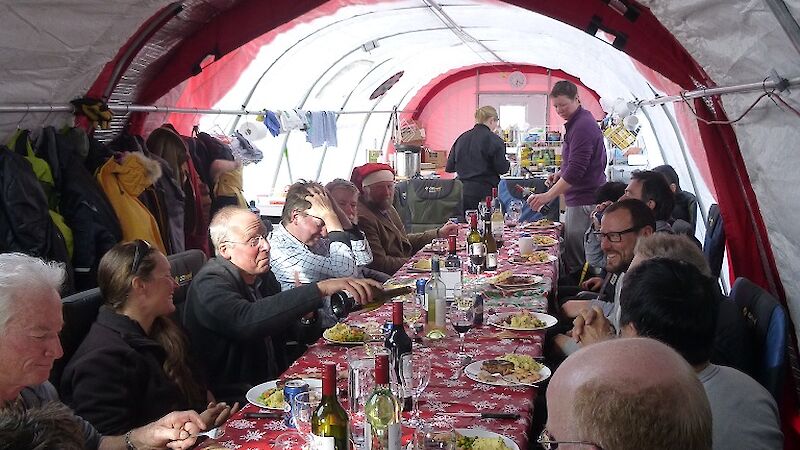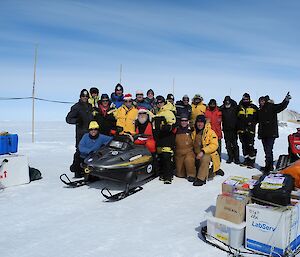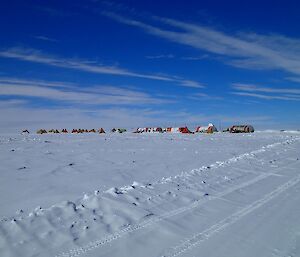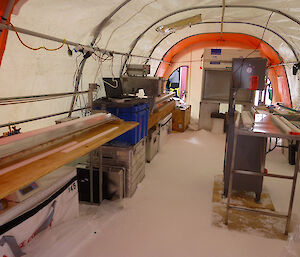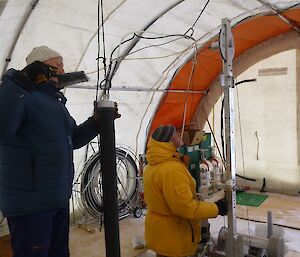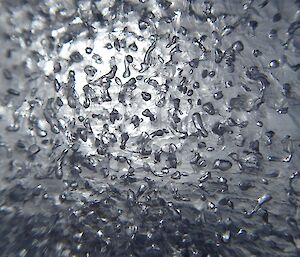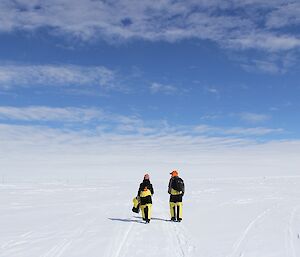Finally, all of us made it into Aurora Basin on Christmas day. It was less than two hours flight by Basler aircraft. Field leader, Sharon Labudda, and Air Ground Support Officer, Noel Paton, were waiting for us at the skiway and took us to the camp.
The Aurora Basin camp was in good shape as all the tents were set up, except for the processing tent, which will be my work place. The camp contains one kitchen/living tent, two ice core drilling tents, one ice core processing tent, one power and equipment tent, two toilet tents, one medical tent, and 18 sleeping tents.
We have only one heater in our camp named ‘Toby’. He is our best friend. He is always in the kitchen tent, working hard to keep us warm.
The power and equipment tent is the most important tent. It contains three generators, an ice melter for making water, and a shower. The generators provide all the power in our camp. We use electricity for drilling, processing, analysing ice cores, communication, cooking and making water. The shower is not really a proper shower, but we can use hot water for washing ourselves occasionally.
After a short break in the cosy kitchen, we started setting up our ice core processing tent to complete the camp setting. It was a windy day so it was difficult to put all the covers on the frames. It took us two days to set up all the processing equipment.
Meanwhile, we had postponed Christmas to 26 December. It was quite an experience having a Christmas in the middle of nowhere and it was a completely white Christmas! We had a nice dinner (thank you, Jenny), Santa Claus visited, we had gifts, we had laughter, and we had a very special good time.
On the work front, the main ice coring and firn air drilling teams are doing well, with only some minor problems encountered. Both teams had reached about 100m depth on 28 December. Our processing team drilled 2 × 12m shallow ice cores. On Sunday 29 December the temperature reached minus 1.5°C outside, and inside the processing tent the temperature rose into the positive degrees. We had to stop working so that all our precious ice cores wouldn’t melt!
We didn’t expect temperatures this warm at Aurora Basin. As we could not work on our ice core, we decided to enjoy the warm day. Some people went skiing; others walked to the skiway and had a cup of tea in the sunshine.
Once it cooled down again in the late afternoon, we went back to work. The processing team drilled another 10m of shallow core, the main drilling team reached 132m, and the firn air drilling team reached 104.5m. They also extracted air from two levels. We finished the day with a nice dinner and few glasses of wine in the cosy kitchen tent.
Mana Inoue is a PhD student at the Antarctic Climate and Ecosystems Cooperate Research Centre and the Institute for Marine and Antarctic Studies at the University of Tasmania. She is working as a field assistant at Aurora Basin, cutting, scraping and analysing ice cores.

